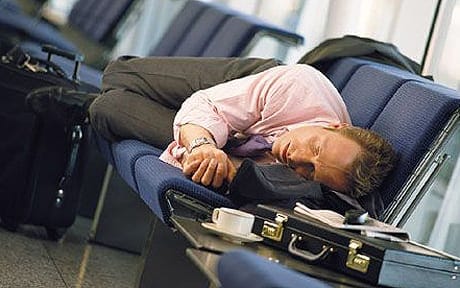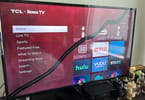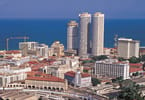Jet lag isn’t something we’d wish on anyone. Learning how to handle it, without relying on sleeping pills, is something everyone should try to achieve.
The best way to beat jet lag is to quickly and clearly give your body the information it needs about the new time zone. In short, your body needs a good amount of sleep and sunlight, at the right times. By setting your watch to your destination time zone before you take off, you’ll settle in to your journey with more ease.
1. Sync your body and brain with the sun
Our circadian rhythms evolved to be linked to the solar day, which means our internal clock can be easily influenced by quantities and timings of daylight. Experienced air travelers know that flying east across time zones is harder than flying west, because traveling east shortens the days while traveling west lengthens them. It means your circadian rhythm needs to do more to catch up.
Max Lugavere, director of film Bread Head and who you might recognize from the Dr. Oz show, says, “Our bodies and brains have literally evolved to sync with the sun. When I arrive at a destination, if the sun is still out, I step outside and look at the sky without sunglasses—not directly at the sun, but towards the sky, which even on a cloudy day is brighter than any indoor lighting could ever be. The following day, I step outside as soon as I wake up and do the same thing. The bright light helps to anchor the body’s entire 24-hour cycle.”
2. Take a small amount of melatonin
Melatonin is a hormone that tells your brain when it’s time to wind down and go to sleep. Taking a small amount, between three to five milligrams, 30 minutes before you want to go to sleep, can really help your body clock. Taking it in the morning tricks your brain into believing you slept longer. But be careful, says Lugavere, because “this naturally-produced hormone is easily suppressed by bright light, so I try to minimize my exposure to glaring screens for at least an hour before bed.” Sorry, Spider-Man. You can’t binge on back-to-back Marvel movies on the in-flight entertainment if you want quality shut eye.
• Traveling East? Morning light and evening melatonin to fast-forward your body clock
• Traveling West? Evening light and morning melatonin to rewind your body clock
3. Time your meals
Airplane food is fun. It comes in lots of little boxes and wrappers, each one its own little puzzle to solve. It’s also astonishingly bad for you, high in quick carbohydrates, overly processed oils and mysterious additives that will make you feel rough. Lots of jet lag experts never touch the stuff.
Instead, says Lugavere, we can strategically avoid food to soften the blow of jet lag. “I avoid food and caffeine during long flights (but drink lots of water), until eating a large fast-breaking meal (along with a cup or two of coffee) the morning after I arrive (or just upon arrival, if I arrive in the morning). A protocol similar to this, developed by a chronobiologist at the Argonne National Laboratory in Illinois, was shown to significantly reduce occurrence of jet lag.”
4. Take a cold shower
Lugavere has protocols for both the morning and evening when he needs to get his body clock back in check. “Taking a shower on the coldest setting could theoretically trigger a hormone response akin to what normally occurs waking up – helping to put you back on track. I do this regularly and when I’m fatigued the cold makes my brain feel like it’s coming back “online.” In the evening, Lugavere recommends turning the air conditioner down, then taking a warm bath or shower. “Stepping out into the cooler room tricks the body into a sleepier state,” he says.
5. Plan to arrive at your destination in the evening
A great tip when buying your flight tickets is to ensure you arrive at your destination in the evening. That way you are more likely to fall asleep quickly and will wake feeling rested.
It is also essential to set your watch to your destination time zone. Do this before you take off. That way you will settle in for the journey knowing the routine for the next one, two or even three-months of your trip away.
6. Invest in technology
Here are a few specific technology tips that can help with jet lag:
• Neuroon. The world’s first smart sleep mask.
• The GloToSleep Mask. Uses gently dimming light to help you fall asleep.
• SeatGuru App. Let’s you avoid seats in galleys, near washrooms and at the back of a plane, which are bumpier.
WHAT TO TAKE AWAY FROM THIS ARTICLE:
- When I arrive at a destination, if the sun is still out, I step outside and look at the sky without sunglasses—not directly at the sun, but towards the sky, which even on a cloudy day is brighter than any indoor lighting could ever be.
- “I avoid food and caffeine during long flights (but drink lots of water), until eating a large fast-breaking meal (along with a cup or two of coffee) the morning after I arrive (or just upon arrival, if I arrive in the morning).
- “Taking a shower on the coldest setting could theoretically trigger a hormone response akin to what normally occurs waking up – helping to put you back on track.























![China's Hyperloop Train: A Glimpse into the Future of Transportation 20 Travel Tourism News | Domestic & International Hyperloop Train China [Photo: Hyperloop Transportation Technologies]](/cdn-cgi/image/width=145,height=100,fit=crop,quality=80,format=auto,onerror=redirect,metadata=none/wp-content/uploads/2024/02/180720163348-hyperlooptt-china-capsule.jpg)